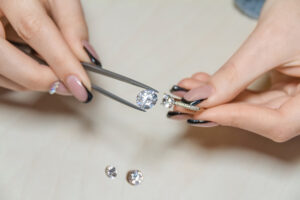
According to diamond consultant Paul Zimnisky, technology and the creation of quality lab grown diamonds have considerably improved over the last five years. For your information, Zimnisky is a diamond market analyst from New York. Zimnisky believes that synthetic diamonds have penetrated a more extensive consumer market because of a considerable difference in price with mined diamonds.
Zimnisky reckons that lab-diamond manufacturing for jewelry has increased from some hundred to thousand carats per year in 2017 to about 3 million carats this year. The above-mentioned represents an estimated medium-to-high one-digit portion of the overall diamond market across the world.
There has been a hike in the supplier and retailer count for novelty diamonds as well as diamonds for use in industrial applications and as the so-called carbon-neutral stones.
It seems to Zimnisky that several customers are choosing lab made diamonds instead of mined diamonds due to the considerable price difference between both products. He added that according to a price survey, one can purchase a lab-created diamond of 2.15 carats with better than an average quality grade for the cost of a one-carat mined diamond with equivalent quality.
Zimnisky feels that the price disparity between generic laboratory-made diamonds and mined diamonds has widened steadily over the past few years. In certain cases, it has expanded from 10 to 15% some years before to up to 75% or more.
You can think of the difference in price as the discount for a laboratory-made diamond relative to one mined from the earth that has similar quality and size. Lab-made diamond companies are likely to leverage branding and alternative marketing strategies. With that likelihood, marketing for diamonds could pay attention to lower-priced jewelry that competes for less with costlier mined diamond jewelry.

There are new and emerging applications for diamonds like medical equipment energy storage, semiconductors, and sophisticated thermal management equipment. Those applications are likely to be the main source of growth for laboratory diamonds over a long period.
As per Zimnisky, the said applications have a market size that goes above the jewelry market size, and customers are likelier to get indiscriminate regarding whether the stone is artificial or natural.
Zimnisky suggests that the lab-generated diamond market may grow by $4 billion in the next few years. He expects considerable growth for that market, alongside fashion jewelry trends as well as high-tech and non-jewelry applications.
